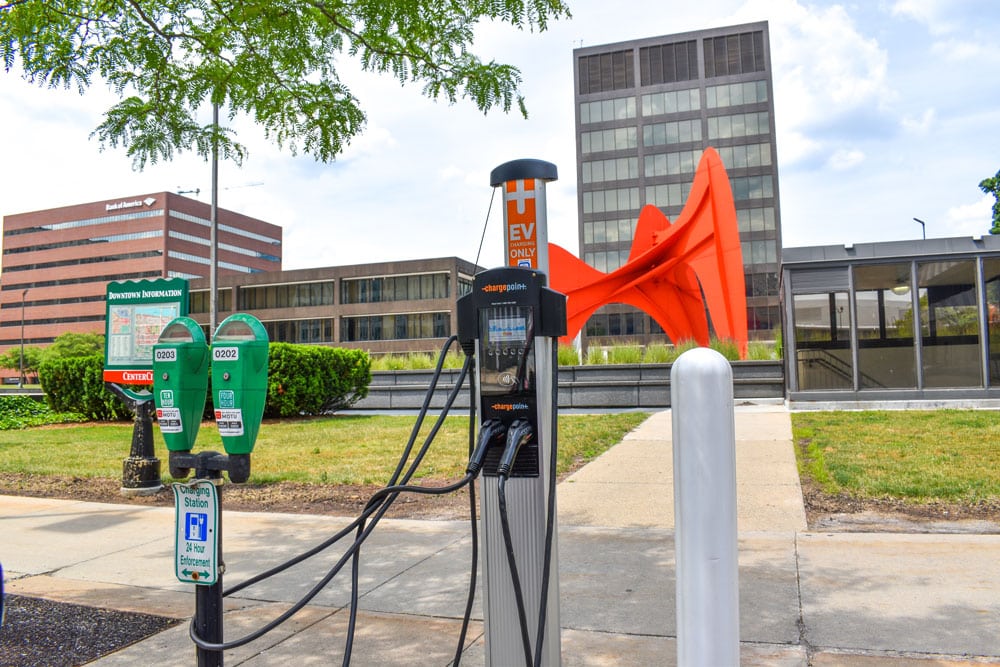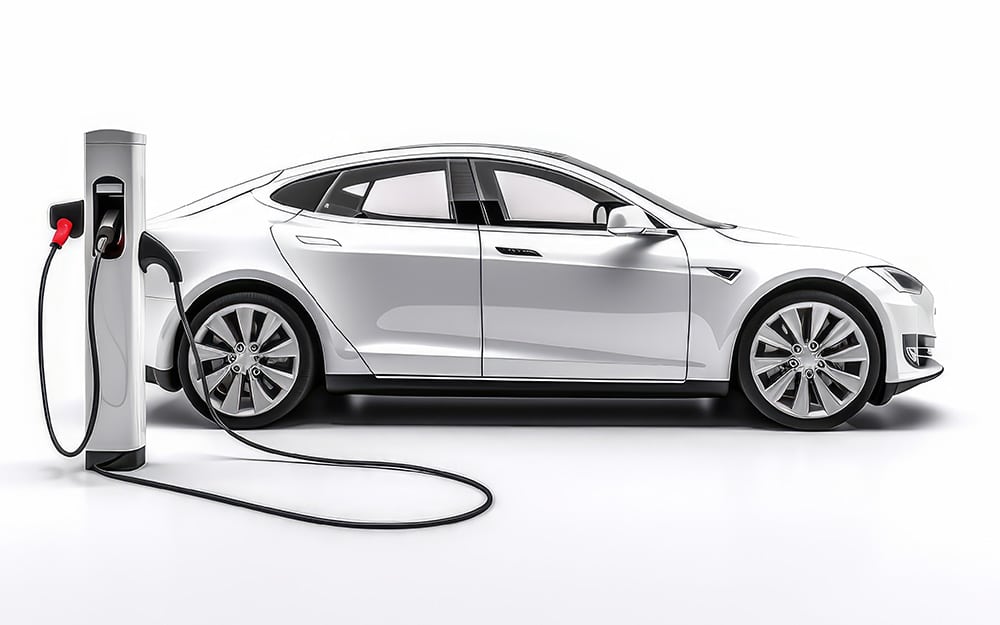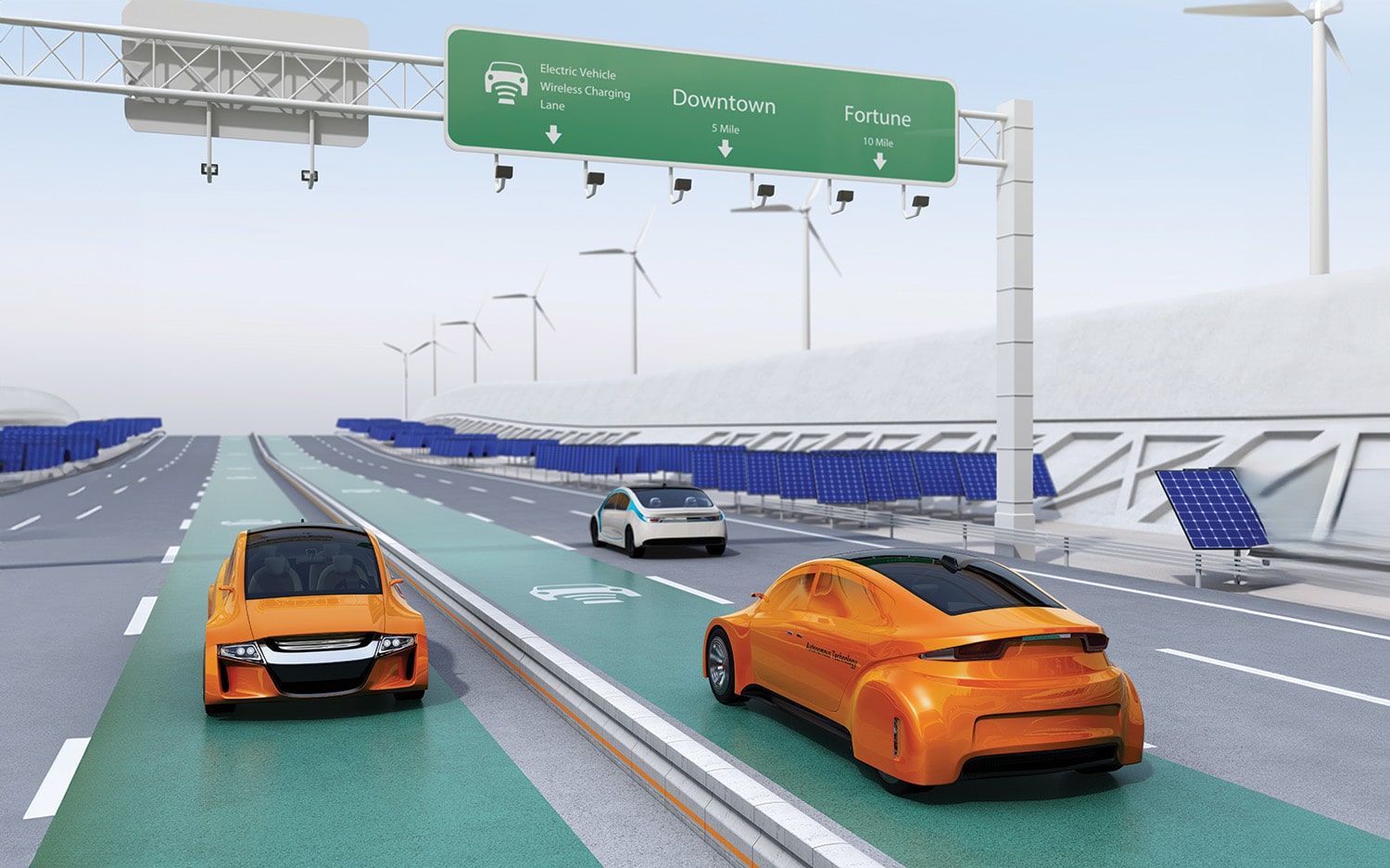The Green Standard
The Green Standard
Cautious Optimism about EVs

The passage in November 2021 of the Infrastructure Investment and Jobs Act (IIJA) brought $1.2 trillion in funding for infrastructure over five years. Electric vehicles (EVs) and supporting charging infrastructure stand to benefit from an unprecedented $31 billion in funding. This is a significant investment in advancing electrification that should be met with cautious optimism.
The market for EVs in the United States continues to grow rapidly. It’s clear that automotive manufacturers are starting to compete for a growing share of the market. If you watched the Superbowl in February most of the car commercials were focused on highlighting upcoming new models of electric cars. Even though EV sales continue to increase it still comprises a small fraction of the overall market. Even in California, home to more than 40% of all registered EVs, they only account for about 8% of all registered vehicles. However, the rapid year over year growth leaves room for hope in EV adoption.
With these rapid changes in the emerging EV market, it’s important to develop a framework and consider factors related to EV implementation and the deployment of charging infrastructure.
Charging Station Implementation
There has not been a broad conversation about the role of government in providing charging infrastructure and access for plugging in privately owned vehicles. Cities, colleges, universities, and airports don’t currently provide access for individuals to fill up personal private vehicles with gasoline. That role has traditionally been left to the private sector. Despite the funding provided by the IIJA for a network of EV charging infrastructure, it will still leave unfunded costs for communities.
Many cities previously made investments and installed EV charging infrastructure. Those charging stations experience a very low utilization because of the lack of overall EV adoption. With more resources to deployed for charging infrastructure, there is still concern that it will not be used in the near-term until EVs availability grows. It creates a chicken and egg situation and distracts from more important critical transportation investments like transit, biking and walking that have more beneficial environmental and cost benefits.
Most EV charging installations have been focused on off-street facilities, but more on-street charging options have emerged, although many require costly installations into the sidewalk, street, and public right-of-way for the electrical conduit. The complexities and added costs don’t make these locations as feasible for communities. Additionally, with growing demand for on-street curb space, on-street charging is not currently the highest and best use for finite public space.
Another challenge to consider is pricing for EV charging. The majority of current EV charging takes place at the home of EV owners while vehicles are not in use overnight. So, for the convenience and to recover the costs for installations and maintenance of EV infrastructure the question is what rate to charge if any. If a customer is already paying to park or is a parking permit holder in garage, should they pay extra for charging? In Grand Rapids, we currently meter all EV charging stations 24/7 and require payment for parking. In the off-street facilities, this charge is in addition to that required for parking facility.
Fleet
For many public agencies, the mix of fleet vehicles is largely comprised of heavy-duty vehicles. There is a lack of heavy-duty EVs and equipment able to meet the needs of agencies without compromising services to the public. There are options that are emerging for electric school buses, but other common vehicles like street sweepers, refuse packers, and snowplows have limited electric options.
Equity
Communities across the country are wrestling with challenges in creating a transportation system to better address equity challenges and better connect residents and employees to transportation and reducing climate impacts. Shifts in transportation should not only be viewed as they relate to climate change, but also with intentionality toward equity and affordability. Transportation is the second-highest household expense after housing. To the extent one can lower it, it allows households to spend money on other needs.
Neighborhoods of color see less private investment and black and hispanic residents have lower incomes compared to white residents in many cities like Grand Rapids. Residents also have unequal access to safe and fast transportation options. This is not unique to Grand Rapids, but these disparities have only broadened during the pandemic and addressing them requires a commitment to equity. Related to both economic opportunity and mobility, communities of color experience opportunity differently. Racial and income disparities also persist in ownership of personal vehicles, and this will only continue related to EV ownership.
It’s important to examine the costs of EVs compared to gas powered cars. Average costs of EVs range from $15,000 to $20,000 more than a new comparable gas-powered vehicle at approximately $56,000 per vehicle. This upfront cost continues to drop each year as production increases but is still out of reach to majority of Americans. While EVs are higher in their initial cost than traditional gas-powered vehicles, the amount of money saved in fuel and maintenance over the vehicle’s lifetime offsets the higher up-front cost. Although more expensive in upfront costs, EVs offer lower costs over the long-term. Still, these costs impact the accessibility to individuals of varying income levels.
Opportunities and Solutions to Consider
There are ways to try and confront these factors and prepare for electric vehicles, prioritizing equity. Electrified carsharing increases transportation options for those who are least likely to own a car and is potentially most beneficial to people who are least likely to be able to afford privately-owned vehicles. Communities can form non-profits or work with private companies to implement shared electric vehicles. Programs need not be limited to electric cars but should include electrified options like shared e-bikes, e-scooters, and e-assist cargo bikes that could provide a more cost-effective, faster way to reduce the climate impacts from transportation. Focus on access to electric vehicles needs to also needs to explore ownership. This is more challenging for electric cars but could be an opportunity for electric bikes and scooters.
Communities need to prioritize financial resources for EV charging in multi-family housing, and affordable housing developments to help address charging for residents that don’t have access to parking or charging. This could also be incorporated into the distribution of mobility hubs that could provide locations for e-bikes, scooters, carsharing, access to transit, and charging of EVs. This will help centralize charging locations around maximizing access to transportation.
Shifts in transportation should not only be viewed as they relate to climate change, but also with intentionality toward equity and affordability. I am fearful that the focus on EVs and EV charging may lead to some greenwashing and deter from investments in biking, walking, and transit infrastructure. The goal should continue to be implementation of the most cost-effective solutions to reduce emissions by reducing single occupant vehicles and improving transportation choice.
Electric cars are coming but should not be the sole focus of cities in their approach to reducing the climate impacts of transportation. It is essential for local agencies to ensure that inclusive and accessible mobility options exist and are maintained. Local governments are going to need to think about and plan for electrified vehicles considering tradeoffs. This should include thinking beyond cars to transit, biking and walking, and increased mobility options that can provide greater transportation resources to citizens. Electrified options like shared EVs, e-bikes, e-scooters, and e-assist cargo bikes could provide a more cost-effective, faster way to reduce the climate impacts from transportation
Josh Naramore is the Mobile GR Director for the City of Grand Rapids, MI, and a member of IPMI’s Electric Vehicle Readiness Cohort and Smart Transportation Task Force.
-
Josh Naramorehttps://parking-mobility-magazine.org/author/josh-naramore/September 6, 2022
-
Josh Naramorehttps://parking-mobility-magazine.org/author/josh-naramore/April 6, 2023
-
Josh Naramorehttps://parking-mobility-magazine.org/author/josh-naramore/August 1, 2023

Electric Vehicle Charging Operations Research
Preliminary Results


Ready, Set, Plug-In
EV Readiness Perspectives







